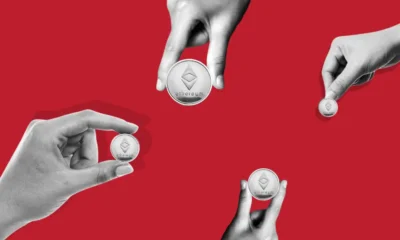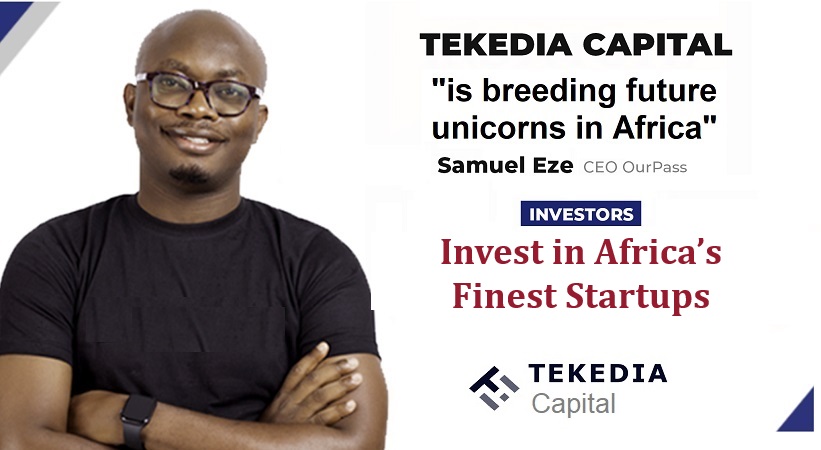News
Cryptocurrency Basics: Pros, Cons and How It Works

In this article we cover:
What is cryptocurrency?
Cryptocurrency (or “crypto”) is a digital currency, such as Bitcoin, that is used as an alternative payment method or speculative investment. Cryptocurrencies get their name from the cryptographic techniques that let people spend them securely without the need for a central government or bank.
-
Bitcoin was initially developed primarily to be a form of payment that isn’t controlled or distributed by a central bank. While financial institutions have traditionally been necessary to verify that a payment has been processed successfully, Bitcoin accomplishes this securely, without that central authority.
-
Ethereum uses the same underlying technology as Bitcoin, but instead of strictly peer-to-peer payments, the cryptocurrency is used to pay for transactions on the Ethereum network. This network, built on the Ethereum blockchain, enables entire financial ecosystems to operate without a central authority. To visualize this, think insurance without the insurance company, or real estate titling without the title company.
-
Scores of altcoins (broadly defined as any cryptocurrency other than Bitcoin) arose to capitalize on the various — and at times promising — use cases for blockchain technology.
Advertisement
| NerdWallet rating
NerdWallet’s ratings are determined by our editorial team. The scoring formula for online brokers and robo-advisors takes into account over 15 factors, including account fees and minimums, investment choices, customer support and mobile app capabilities. 4.9 /5 |
NerdWallet rating
NerdWallet’s ratings are determined by our editorial team. The scoring formula for online brokers and robo-advisors takes into account over 15 factors, including account fees and minimums, investment choices, customer support and mobile app capabilities. 5.0 /5 |
NerdWallet rating
NerdWallet’s ratings are determined by our editorial team. The scoring formula for online brokers and robo-advisors takes into account over 15 factors, including account fees and minimums, investment choices, customer support and mobile app capabilities. 5.0 /5 |
|
Fees $0 per online equity trade |
Fees $0 per trade for online U.S. stocks and ETFs |
Fees $0.005 per share; as low as $0.0005 with volume discounts |
|
Promotion None no promotion available at this time |
Promotion None no promotion available at this time |
Promotion Exclusive! US resident opens a new IBKR Pro individual or joint account receives 0.25% rate reduction on margin loans. Tiers apply. |
Why do people invest in cryptocurrencies?
People invest in cryptocurrencies for the same reason anyone invests in anything. They hope its value will rise, netting them a profit.
If demand for Bitcoin grows, for example, the interplay of supply and demand could push up its value.
If people began using Bitcoin for payments on a huge scale, demand for Bitcoin would go up, and in turn, its price in dollars would increase. So, if you’d purchased one Bitcoin before that increase in demand, you could theoretically sell that one Bitcoin for more U.S. dollars than you bought it for, making a profit.
The same principles apply to Ethereum. “Ether” is the cryptocurrency of the Ethereum blockchain, where developers can build financial apps without the need for a third-party financial institution. Developers must use Ether to build and run applications on Ethereum, so theoretically, the more that is built on the Ethereum blockchain, the higher the demand for Ether.
However, it’s important to note that to some, cryptocurrencies aren’t investments at all. Bitcoin enthusiasts, for example, hail it as a much-improved monetary system over our current one and would prefer we spend and accept it as everyday payment. One common refrain — “one Bitcoin is one Bitcoin” — underscores the view that Bitcoin shouldn’t be measured in USD, but rather by the value it brings as a new monetary system.
Why is Bitcoin still popular?
Since its inception, Bitcoin has been regularly derided as dead, worthless or a scam, in part because its price is prone to meteoric rises and dramatic falls. When Bitcoin’s price rose to $60,000 in 2021 before collapsing to around $17,000 in 2022, many experts and investors said it wouldn’t recover from this burst.
But it did, hitting a series of record highs in early 2024. Those surges in price could be partially be attributed to approval by the SEC of spot Bitcoin ETFs in Jan. 2024. This gave some of the largest asset managers in the world (think Fidelity and BlackRock) a way to offer their clients exposure to Bitcoin, making it easier for those clients to hold Bitcoin in accounts such as IRAs and taxable brokerage accounts.
But Bitcoin’s 2024 price rise is also due to other factors. Every four years, something known as “Bitcoin halving” occurs. The most recent halving occurred in April 2024, cutting the mining reward from 6.25 to 3.125. The anticipation of fewer Bitcoins entering the market drives up the price.
What’s more, the surge in interest rates in 2022 that pummeled growth stocks may have had a similar influence on Bitcoin; investors tend to prefer security over volatility during times of uncertainty. But as talk of interest rate cuts in 2024 circulates, some investors may have more appetite for risky assets like Bitcoin, leading them to get back in now.
And lastly, there are still Bitcoin enthusiasts who preach that looking at Bitcoin through the lens of fiat currencies like the U.S. dollar or Great British pound is missing the point entirely, and that its true value lies in being a new monetary system.
But, if there’s anything about Bitcoin that appears to be predictable, it’s that it will continue to be volatile. In the relative short-term, both camps are likely right: Bitcoin will rise and Bitcoin will fall. But at the moment, it appears the Bitcoin bulls are winning out.
How does cryptocurrency work?
Cryptocurrencies are supported by a technology known as blockchain, which maintains a tamper-resistant record of transactions and keeps track of who owns what. The use of blockchains addressed a problem faced by previous efforts to create purely digital currencies: preventing people from making copies of their holdings and attempting to spend it twice[0].
Individual units of cryptocurrencies can be referred to as coins or tokens, depending on how they are used. Some are intended to be units of exchange for goods and services, others are stores of value, and some can be used to participate in specific software programs such as games and financial products.
How are cryptocurrencies created?
One common way cryptocurrencies are created is through a process known as mining, which is used by Bitcoin. Bitcoin mining can be an energy-intensive process in which computers solve complex puzzles in order to verify the authenticity of transactions on the network. As a reward, the owners of those computers can receive newly created cryptocurrency. Other cryptocurrencies use different methods to create and distribute tokens, and many have a significantly lighter environmental impact.
For most people, the easiest way to get cryptocurrency is to buy it, either from an exchange or another user.
Why are there so many kinds of cryptocurrency?
It’s important to remember that Bitcoin is different from cryptocurrency in general. While Bitcoin is the first and most valuable cryptocurrency, the market is large.
There are more than two million different cryptocurrencies in existence, according to CoinMarketCap.com, a market research website[0]. And while some cryptocurrencies have total market valuations in the hundreds of billions of dollars, others are obscure and essentially worthless.
If you’re thinking about getting into cryptocurrency, it can be helpful to start with one that is commonly traded and relatively well-established in the market. These coins typically have the largest market capitalizations.
Thoughtfully selecting your cryptocurrency, however, is no guarantee of success in such a volatile space. Sometimes, an issue in the deeply interconnected crypto industry can spill out and have broad implications on asset values.
For instance, in November of 2022 the market took a major hit as the cryptocurrency exchange FTX struggled to deal with liquidity issues amid a spike in withdrawals. As the fallout spread, cryptocurrencies both large and small saw their values plummet.
Are cryptocurrencies financial securities, like stocks?
Whether or not cryptocurrency is a security is a bit of a gray area right now. To back up a little, generally, a “security” in finance is anything that represents a value and can be traded. Stocks are securities because they represent ownership in a public company. Bonds are securities because they represent a debt owed to the bondholder. And both of these securities can be traded on public markets.
Regulators are increasingly starting to signal cryptocurrencies should be regulated similarly to other securities, such as stocks and bonds. But this take is receiving pushback; scholars, legal firms and some of the biggest players in the crypto industry have argued against this, claiming the rules that apply to stocks and bonds, for example, don’t apply as broadly to cryptocurrencies.
The Securities and Exchange Commission has set its sights on the sector generally. The agency has raised concerns about activities including crypto staking, and well as the operations of some large crypto companies.
Whether the SEC will treat cryptocurrencies, or specific types of cryptocurrencies, as securities will be at the forefront of crypto regulation, and could have major implications for the asset class in the near future.
Pros and cons of cryptocurrency
Cryptocurrency inspires passionate opinions across the spectrum of investors. Here are a few reasons that some people believe it is a transformational technology, while others worry it’s a fad.
Cryptocurrency pros
-
Some supporters like the fact that cryptocurrency removes central banks from managing the money supply since over time these banks tend to reduce the value of money via inflation.
-
In communities that have been underserved by the traditional financial system, some people see cryptocurrencies as a promising foothold. Pew Research Center data from 2021 found that Asian, Black and Hispanic people “are more likely than White adults to say they have ever invested in, traded or used a cryptocurrency[0].”
-
Other advocates like the blockchain technology behind cryptocurrencies, because it’s a decentralized processing and recording system and can be more secure than traditional payment systems.
-
Some cryptocurrencies offer their owners the opportunity to earn passive income through a process called staking. Crypto staking involves using your cryptocurrencies to help verify transactions on a blockchain protocol. Though staking has its risks, it can allow you to grow your crypto holdings without buying more.
Cryptocurrency cons
-
Many cryptocurrency projects are untested, and blockchain technology in general has yet to gain wide adoption. If the underlying idea behind cryptocurrency does not reach its potential, long-term investors may never see the returns they hoped for.
-
For shorter-term crypto investors, there are other risks. Its prices tend to change rapidly, and while that means that many people have made money quickly by buying in at the right time, many others have lost money by doing so just before a crypto crash.
-
Those wild shifts in value may also cut against the basic ideas behind the projects that cryptocurrencies were created to support. For example, people may be less likely to use Bitcoin as a payment system if they are not sure what it will be worth the next day.
-
The environmental impact of Bitcoin and other projects that use similar mining protocols is significant. A comparison by the University of Cambridge, for instance, said worldwide Bitcoin mining consumes more than twice as much power as all U.S. residential lighting[0]. Some cryptocurrencies use different technology that demands less energy.
-
Governments around the world have not yet fully reckoned with how to handle cryptocurrency, so regulatory changes and crackdowns have the potential to affect the market in unpredictable ways.
Track your finances all in one place
Get started by signing up and linking an account.
Cryptocurrency legal and tax issues
There’s no question that cryptocurrencies are legal in the U.S., though China has essentially banned their use, and ultimately whether they’re legal depends on each individual country.
The question of whether cryptocurrencies are legally allowed, however, is only one part of the legal question. Other things to consider include how crypto is taxed and what you can buy with cryptocurrency.
-
Legal tender: You might call them cryptocurrencies, but they differ from traditional currencies in one important way: there’s no requirement in most places that they be accepted as “legal tender.” The U.S. dollar, by contrast, must be accepted for “all debts, public and private.” Countries around the world are taking various approaches to cryptocurrency. For now, in the U.S., what you can buy with cryptocurrency depends on the preferences of the seller.
-
Crypto taxes: Again, the term “currency” is a bit of a red herring when it comes to taxes in the U.S. Cryptocurrencies are taxed as property, rather than currency. That means that when you sell them, you’ll pay tax on the capital gains, or the difference between the price of the purchase and sale. And if you’re given crypto as payment — or as a reward for an activity such as mining — you’ll be taxed on the value at the time you received them.
Your decision: Is cryptocurrency a good investment?
Cryptocurrency is a relatively risky investment, no matter which way you slice it. Generally speaking, high-risk investments should make up a small part of your overall portfolio — one common guideline is no more than 10%. You may want to look first to shore up your retirement savings, pay off debt or invest in less-volatile funds made up of stocks and bonds.
There are other ways to manage risk within your crypto portfolio, such as by diversifying the range of cryptocurrencies that you buy. Crypto assets may rise and fall at different rates, and over different time periods, so by investing in several different products you can insulate yourself — to some degree — from losses in one of your holdings.
Perhaps the most important thing when investing in anything is to do your homework. This is particularly important when it comes to cryptocurrencies, which are often linked to a specific technological product that is being developed or rolled out. When you buy a stock, it is linked to a company that is subject to well-defined financial reporting requirements, which can give you a sense of its prospects.
Cryptocurrencies, on the other hand, are more loosely regulated in the U.S., so discerning which projects are viable can be even more challenging. If you have a financial advisor who is familiar with cryptocurrency, it may be worth asking for input.
For beginning investors, it can also be worthwhile to examine how widely a cryptocurrency is being used. Most reputable crypto projects have publicly available metrics showing data such as how many transactions are being carried out on their platforms. If use of a cryptocurrency is growing, that may be a sign that it is establishing itself in the market. Cryptocurrencies also generally make “white papers” available to explain how they’ll work and how they intend to distribute tokens.
If you’re looking to invest in less established crypto products, here are some additional questions to consider:
-
Who’s heading the project? An identifiable and well-known leader is a positive sign.
-
Are there other major investors who are investing in it? It’s a good sign if other well-known investors want a piece of the currency.
-
Will you own a portion in the company or just currency or tokens? This distinction is important. Being a part owner means you get to participate in its earnings (you’re an owner), while buying tokens simply means you’re entitled to use them, like chips in a casino.
-
Is the currency already developed, or is the company looking to raise money to develop it? The further along the product, the less risky it is.
It can take a lot of work to comb through a prospectus; the more detail it has, the better your chances it’s legitimate. But even legitimacy doesn’t mean the currency will succeed. That’s an entirely separate question, and that requires a lot of market savvy. Be sure to consider how to protect yourself from fraudsters who see cryptocurrencies as an opportunity to bilk investors.
Frequently asked questions
How does a blockchain work?
Most cryptocurrencies are based on blockchain technology, a networking protocol through which computers can work together to keep a shared, tamper-proof record of transactions. The challenge in a blockchain network is in making sure that all participants can agree on the correct copy of the historical ledger. Without a recognized way to validate transactions, it would be difficult for people to trust that their holdings are secure. There are several ways of reaching “consensus” on a blockchain network, but the two that are most widely used are known as “proof of work” and “proof of stake.”
What does proof of work mean?
Proof of work is one way of incentivizing users to help maintain an accurate historical record of who owns what on a blockchain network. Bitcoin uses proof of work, which makes this method an important part of the crypto conversation. Blockchains rely on users to collate and submit blocks of recent transactions for inclusion in the ledger, and Bitcoin’s protocol rewards them for doing so successfully. This process is known as mining.
There is stiff competition for these rewards, so many users try to submit blocks, but only one can be selected for each new block of transactions. To decide who gets the reward, Bitcoin requires users to solve a difficult puzzle, which uses a huge amount of energy and computing power. The completion of this puzzle is the “work” in proof of work.
For lucky miners, the Bitcoin rewards are more than enough to offset the costs involved. But the huge upfront cost is also a way to discourage dishonest players. If you win the right to create a block, it might not be worth the risk of tampering with the records and having your submission thrown out — forfeiting the reward. In this instance, spending the money on energy costs in an attempt to tamper with the historical record would have resulted in significant loss.
Ultimately, the goal of proof of work is to make it more rewarding to play by the rules than to try to break them.
Proof of stake is another way of achieving consensus about the accuracy of the historical record of transactions on a blockchain. It eschews mining in favor of a process known as staking, in which people put some of their own cryptocurrency holdings at stake to vouch for the accuracy of their work in validating new transactions. Some of the cryptocurrencies that use proof of stake include Cardano, Solana and Ethereum (which is in the process of converting from proof of work).
Proof of stake systems have some similarities to proof of work protocols, in that they rely on users to collect and submit new transactions. But they have a different way of incentivizing honest behavior among those who participate in that process. Essentially, people who propose new blocks of information to be added to the record must put some cryptocurrency at stake. In many cases, your chances of landing a new block (and the associated rewards) go up as you put more at stake. People who submit inaccurate data can lose some of the money they’ve put at risk.
How do you mine cryptocurrency?
Mining cryptocurrency is generally only possible for a proof-of-stake cryptocurrency such as Bitcoin. And before you get too far, it is worth noting that the barriers to entry can be high and the probability of success relatively low without major investment.
While early Bitcoin users were able to mine the cryptocurrency using regular computers, the task has gotten more difficult as the network has grown. Now, most miners use special computers whose sole job is to run the complex calculations involved in mining all day every day. And even one of these computers isn’t going to guarantee you success. Many miners use entire warehouses full of mining equipment in their quest to collect rewards.
If you don’t have the resources to compete with the heavy hitters, one option is joining a mining pool, where users share rewards. This reduces the size of the reward you’d get for a successful block, but increases the chance that you could at least get some return on your investment.
How do you pull your money out of crypto?
Just like with buying cryptocurrencies, there are several options for converting your crypto holdings into cash. While decentralized exchanges and peer-to-peer transactions may be right for some investors, many choose to use centralized services to offload their holdings.
With a centralized exchange, the process is basically the reverse of buying. But one advantage if you own crypto is that you probably already have everything set up. Here are the steps:
-
Connect the wallet that holds the cryptocurrencies that you want to sell, and make sure the exchange you’ve chosen supports both that wallet and the asset in question.
-
Move your cryptocurrency onto the exchange.
-
Sell your cryptocurrency.
-
Transfer the proceeds back to your bank account.
Every exchange will handle such transactions differently, so you’ll want to look up the fees and processes for your specific provider. Also, remember that you may be creating crypto tax liability when you sell your digital assets.
How does a blockchain work?
Most cryptocurrencies are based on
blockchain technology
, a networking protocol through which computers can work together to keep a shared, tamper-proof record of transactions. The challenge in a blockchain network is in making sure that all participants can agree on the correct copy of the historical ledger. Without a recognized way to validate transactions, it would be difficult for people to trust that their holdings are secure. There are several ways of reaching “consensus” on a blockchain network, but the two that are most widely used are known as “proof of work” and “proof of stake.”
What does proof of work mean?
Proof of work
is one way of incentivizing users to help maintain an accurate historical record of who owns what on a blockchain network. Bitcoin uses proof of work, which makes this method an important part of the crypto conversation. Blockchains rely on users to collate and submit blocks of recent transactions for inclusion in the ledger, and Bitcoin’s protocol rewards them for doing so successfully. This process is known as mining.
There is stiff competition for these rewards, so many users try to submit blocks, but only one can be selected for each new block of transactions. To decide who gets the reward, Bitcoin requires users to solve a difficult puzzle, which uses a huge amount of energy and computing power. The completion of this puzzle is the “work” in proof of work.
For lucky miners, the Bitcoin rewards are more than enough to offset the costs involved. But the huge upfront cost is also a way to discourage dishonest players. If you win the right to create a block, it might not be worth the risk of tampering with the records and having your submission thrown out — forfeiting the reward. In this instance, spending the money on energy costs in an attempt to tamper with the historical record would have resulted in significant loss.
Ultimately, the goal of proof of work is to make it more rewarding to play by the rules than to try to break them.
» Learn more:
How does Bitcoin work?
What is proof of stake?
Proof of stake
is another way of achieving consensus about the accuracy of the historical record of transactions on a blockchain. It eschews mining in favor of a process known as staking, in which people put some of their own cryptocurrency holdings at stake to vouch for the accuracy of their work in validating new transactions. Some of the cryptocurrencies that use proof of stake include Cardano, Solana and Ethereum (which is in the process of converting from proof of work).
Proof of stake systems have some similarities to proof of work protocols, in that they rely on users to collect and submit new transactions. But they have a different way of incentivizing honest behavior among those who participate in that process. Essentially, people who propose new blocks of information to be added to the record must put some cryptocurrency at stake. In many cases, your chances of landing a new block (and the associated rewards) go up as you put more at stake. People who submit inaccurate data can lose some of the money they’ve put at risk.
How do you mine cryptocurrency?
Mining cryptocurrency is generally only possible for a proof-of-stake cryptocurrency such as Bitcoin. And before you get too far, it is worth noting that the barriers to entry can be high and the probability of success relatively low without major investment.
While early Bitcoin users were able to mine the cryptocurrency using regular computers, the task has gotten more difficult as the network has grown. Now, most miners use special computers whose sole job is to run the complex calculations involved in mining all day every day. And even one of these computers isn’t going to guarantee you success. Many miners use entire warehouses full of mining equipment in their quest to collect rewards.
If you don’t have the resources to compete with the heavy hitters, one option is joining a mining pool, where users share rewards. This reduces the size of the reward you’d get for a successful block, but increases the chance that you could at least get some return on your investment.
How do you pull your money out of crypto?
Just like with buying cryptocurrencies, there are several options for converting your crypto holdings into cash. While decentralized exchanges and peer-to-peer transactions may be right for some investors, many choose to use centralized services to offload their holdings.
With a centralized exchange, the process is basically the reverse of buying. But one advantage if you own crypto is that you probably already have everything set up. Here are the steps:
-
Connect the wallet that holds the cryptocurrencies that you want to sell, and make sure the exchange you’ve chosen supports both that wallet and the asset in question.
-
Move your cryptocurrency onto the exchange.
-
Sell your cryptocurrency.
-
Transfer the proceeds back to your bank account.
Every exchange will handle such transactions differently, so you’ll want to look up the fees and processes for your specific provider. Also, remember that you may be creating
crypto tax
liability when you sell your digital assets.
News
US Cryptocurrency Rules Delayed by ‘Never-Ending’ Lawsuits

Ripple CEO says cryptocurrency industry still seeking regulatory clarity from US
Speaking to Bloomberg News on Wednesday (July 17), Author: Brad Garlinghouse he said America is behind behind other countries which have already adopted cryptocurrency regulations.
“What we’re seeing, where it’s the UK, Japan, Singapore… even the European Union, more than two dozen countries have come together to provide a framework for cryptocurrency regulation,” Garlinghouse said.
“It’s frustrating that we as a country can’t get that regulatory framework in place. And instead, we have this never-ending lawsuit coming from the SEC that doesn’t really address the problem.”
Ripple has been the target of some of these legal disputes. Securities and Exchange Commission (SEC) sued the company in 2020, accusing it of conducting a $1.3 billion operation offering of unregistered securities tied to its XRP token.
However, last year a judge ruled that only Ripple’s institutional sales of XRP, not retail sales, violated the law, a decision widely seen as a victory for the cryptocurrency industry.
As PYMNTS noted at the time, that ruling has “far-reaching repercussions impact across the digital asset ecosystem, which has long maintained that its tokens do not represent securities contracts.”
However, Garlinghouse told Bloomberg on Wednesday that the company cannot wage multimillion-dollar legal battles over each token.
He spoke to the news agency from the Republican National Convention in Milwaukee, where the party is backing the candidacies of former President Donald Trump and Ohio Sen. J.D. Vance, both of whom are considered pro-cryptocurrency.
But Garlinghouse argued that cryptocurrencies “should not be a partisan issue,” and noted that he had recently attended a conference in Washington that included Democrats, including White House officials.
“I think they were there, listening to the industry… it was refreshing to start having that conversation,” she said.
President Joe Biden earlier this year he vetoed a measure which would have ended the SEC’s special rules for crypto-asset custodians. This legislation was supported by both the digital asset industry and the banking industry.
Ripple early this year donated $25 million to the cryptocurrency industry’s super PAC Fair Smoothiewith Garlinghouse stating at the time that such donations would continue every year, as long as the industry had its detractors.
Second Open SecretsWhich monitor spending For campaigns, the PAC has spent $13.4 million this year, much of it to help defeat Rep. Katie Porter’s (D-Calif.) U.S. Senate campaign.
News
The Future of Cybersecurity in the Cryptocurrency Industry

The cryptocurrency space has had a tumultuous journey, with its fair share of ups and downs. As we look to the future, one area that remains a constant focus is cybersecurity. The digital nature of cryptocurrencies makes them inherently vulnerable to cyber threats, and as the industry evolves, so does the landscape of potential risks.
In 2022, the cryptocurrency market faced significant challenges, with over $2 trillion in market value lost. This event served as a wake-up call for the industry, highlighting the need for robust cybersecurity measures. The future of cryptocurrency security is expected to see a shift towards more regulated and established institutions taking the reins of crypto technology and blockchain infrastructure.
The decentralized nature of cryptocurrencies offers numerous benefits, such as transparency and financial inclusion. However, it also introduces unique security challenges. The risk landscape is filled with threats such as hacking, phishing, ransomware attacks, malware, and social engineering. These threats not only lead to financial losses, but also damage the reputation and trust within the cryptocurrency ecosystem.
Mini-MBA Tekedia edition 15 ((September 9 – December 7, 2024) started recordings; Register today for discounts reserved for early bird customers.
Tekedia AI in Business Masterclass Opens registrations Here.
Join the Tekedia Capital Syndicate and IInvest in Africa’s best startups Here.
The decentralized nature of cryptocurrencies offers many benefits, but it also presents unique security challenges. Cyber risks such as hacking, phishing, and ransomware pose threats to the integrity of digital assets. The infrastructure that supports cryptocurrencies is not immune to vulnerabilities, including smart contract flaws and exchange hacks.
To address these vulnerabilities, the infrastructure that supports cryptocurrencies must be strengthened. Smart contract vulnerabilities, exchange hacks, wallet breaches, and flaws in the underlying blockchain technology are significant concerns that must be addressed to ensure the security and integrity of digital assets.
As cybercriminal tactics and techniques become more sophisticated, the cryptocurrency industry must stay ahead of the curve. The future will likely see more targeted attacks, exploiting weaknesses in infrastructure, networks, and human factors. This requires a proactive and multifaceted approach to cybersecurity.
To mitigate these risks, several measures must be adopted:
Strengthening security measures: Developers, exchanges, and wallet providers must improve security protocols, use strong encryption, implement multi-factor authentication, and conduct regular security audits.
Education and awareness: Users should be educated on best practices for protecting their digital assets, including using strong passwords, recognizing phishing attempts, and using hardware wallets for secure storage.
Looking ahead, the cryptocurrency industry is expected to see an increased focus on robust security measures. Blockchain projects and exchanges are likely to invest in advanced encryption techniques and decentralized storage solutions to protect user assets. The future impact of cyber risk on cryptocurrencies will depend on the collective efforts of stakeholders to address vulnerabilities and strengthen security measures.
Collective efforts by stakeholders in the cryptocurrency space are crucial to address vulnerabilities and strengthen security measures. While challenges persist, advances in cybersecurity technologies and practices offer hope for a more secure and resilient cryptocurrency ecosystem.
The future of cybersecurity in the cryptocurrency industry depends on finding a balance between innovation and regulation. It requires a collaborative effort from all parties involved, from developers to end users, to create a secure environment that fosters trust and growth in the industry. As we move forward, it is critical that lessons learned from past events guide the development of stronger security measures, ensuring the longevity and stability of cryptocurrencies as a vital part of the modern economic toolkit.
Like this:
Like Loading…
News
Bullish XRP and RLBK price predictions rise, outpacing the broader cryptocurrency market, prompting Shiba Inu holders to switch!

Bitcoin’s one-week surge from $60,000 has pushed other cryptocurrencies into an uptrend. However, for many altcoins, this trend has been temporary. Altcoins such as XRP and Shiba Inu (SHIB) have experienced price drops. However, Rollblock, a new altcoin on the Ethereum blockchain, has thrived during this period, attracting thousands of investors looking for long-term growth.
XRP’s Nearly 30% Growth Over Last Week Drops as Selling Pressure Increases
XRP is seeing further price decline as Ripple investors withdraw their profits from the token. The surge in XRP’s price to $0.64 in the past week has provided investors with a perfect opportunity to increase their returns in the short term. With the ongoing sell-off in XRP, XRP has jumped over 8% in the past day and is now trading at $0.59. However, analysts tracking XRP indicators predict that XRP could still extend its gains by over 30% in the coming weeks.
Shiba Inu (SHIB) marks its third consecutive day of losses
Shiba Inu (SHIB) is in a period of adjustment after a week of strong gains. In the last 24 hours, SHIB has seen a jump of over 7%, reflecting a natural market fluctuation. Analysts are observing a death cross on the Shiba Inu chart, which historically signals the potential for future opportunities as the market stabilizes. As investors explore new possibilities, some are diversifying into promising altcoins like Rollblock (RBLK) to strategically rebalance their portfolios and capitalize on the emerging trend.
Rollblock (RBLK) Up Another 7% as New Investors Join Pre-Sale
Rollblock (RBLK) has taken the cryptocurrency market by storm, having attracted investors from more popular altcoins like Shiba Inu (SHIB) and XRP. Rollblock’s growth is attributed to its utility in the $450 billion global gaming industry.
Rollblock aims to use blockchain technology to bridge the gap between centralized and decentralized gambling. With blockchain technology, Rollblock secures every transaction in its online casino, providing transparency and convenience to millions of players who are uncomfortable placing bets on other iGaming platforms.
This innovative use of blockchain technology in the industry has grown Rollblock to over 4,000 new users in less than two months. With plans to add sports betting, this number is expected to grow exponentially in Q3.
Rollblock uses a revenue sharing model that splits up to 30% of its casino’s weekly profits with token holders. This happens after Rollblock buys back $RBLK from the open market and uses half of it for rewards. The other half is burned to increase the price of $RBLK.
Rollblock price has seen four increases in the past month with $RBLK tokens now selling for $0.017. Analysts predict that at the current growth rate, Rollblock could increase by over 800% before the presale ends. For investors looking for a long-term token with growth potential, phase four is the best time to buy Rollblock before its price skyrockets!
Discover the exciting Rollblock (RBLK) pre-sale opportunities now!
Website:https://Rollblockpresale.io/
Social: https://linktr.ee/Rollblockcasino
No spam, no lies, just insights. You can unsubscribe at any time.
News
Texas Crypto Miners Turn to AI as Crypto Declines

As cryptocurrency mining becomes less profitable, Texas cryptocurrency mining companies are switching to supporting artificial intelligence companies.
Bitcoin miners, with their sprawling data centers and access to significant energy resources, are ideally suited for computationally intensive AI operations, and as cryptocurrency mining becomes less profitable, companies see this shift as a logical answer to their problems.
On Thursday, Houston-based Lancium and Denver-based Crusoe Energy Systems announced a multibillion-dollar deal to build a 200-megawatt data center near the West Texas city of Abilene to support advanced artificial intelligence applications such as medical research and aircraft design, CNBC reported. The plant represents the first phase of a larger 1.2 gigawatt project.
Lancium and Crusoe’s move into AI mirrors a broader trend among bitcoin miners. The combined market capitalization of the top U.S.-listed bitcoin miners hit a record $22.8 billion in June. Companies like Bit Digital and Hut 8 are diversifying into AI, with Bit Digital securing a $92 million annual revenue deal to supply Nvidia GPUs and Hut 8 raising $150 million to expand its AI data center.
But the growing popularity of these operations also presents challenges, particularly for the Texas power grid. Last month, the Electric Reliability Council of Texas announced that the state is expected to nearly double its energy production by 2030 to meet the high energy demands of data centers and cryptocurrency operations.
Lieutenant Governor Dan Patrick expressed concern about the projections.
“Cryptocurrency miners and data centers will account for more than 50% of the additional growth. We need to take a close look at these two sectors,” He wrote on Twitter/X. “They produce very few jobs compared to the incredible demands they place on our network. Cryptocurrency miners could actually make more money selling electricity to the network than they do from their cryptocurrency mining operations.”
Analysts predict significant growth in data center power capacity, which is expected to account for up to 9% of U.S. electricity consumption by 2030.
The operations also pose challenges for nearby cities. Earlier this month, TIME reported that a crypto-mining facility was seriously compromising the health of residents in the city of Granbury. TIME reported more than 40 people with serious health problems, including cardiovascular disease, high blood pressure and hearing loss. At least 10 of the residents needed to go to the emergency room or an urgent care facility.
The disturbances were caused by the extreme noise generated by the crypto-mining facility’s fans, which are used to keep the machines cool. While the proposed data center in Abilene would use liquid cooling systems, it’s still unclear whether the facility’s operations would pose a health risk to local residents.
-

 Nfts1 year ago
Nfts1 year agoShardLab Launches ZK-Based Tool for Digital Identity and NFT Vouchers
-

 News1 year ago
News1 year agoWallet recovery firms are abuzz as stranded cryptocurrency investors panic in the bitcoin boom
-

 Bitcoin12 months ago
Bitcoin12 months agoBitcoin, Ethereum, Solana and Cryptocurrency Markets Look Ready to ‘Send’ as Stars Align, According to Investor Chris Burniske
-

 Altcoins12 months ago
Altcoins12 months agoThree Altcoins Poised for Significant Growth in 2024: ETFS, OP, BLAST
-

 Altcoins12 months ago
Altcoins12 months agoAccumulate these altcoins now for maximum gains
-

 Nfts12 months ago
Nfts12 months agoOG Crypto Artist Trevor Jones Unveils Groundbreaking Collection of Ordinals | NFT CULTURE | NFT News | Web3 Culture
-

 Bitcoin12 months ago
Bitcoin12 months agoBillionaires are selling Nvidia stock and buying an index fund that could rise as much as 5,655%, according to some Wall Street analysts
-

 Videos9 months ago
Videos9 months agoKamala just won the boner! [Bad For Crypto]
-

 Videos1 year ago
Videos1 year agoLIVE FOMC 🚨 Could be CATASTROPHIC for Altcoins!
-

 News1 year ago
News1 year agoA Guide for Newcomers & Beginners – Forbes Advisor
-

 Videos1 year ago
Videos1 year agoAttention: a historically significant BITCOIN signal has just appeared!
-

 Videos1 year ago
Videos1 year agoSTOCK MARKET FUD! ⚠️ [Why This Is GREAT For Bitcoin Traders!]







